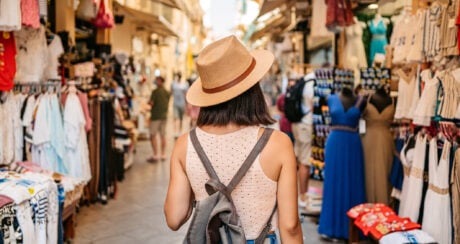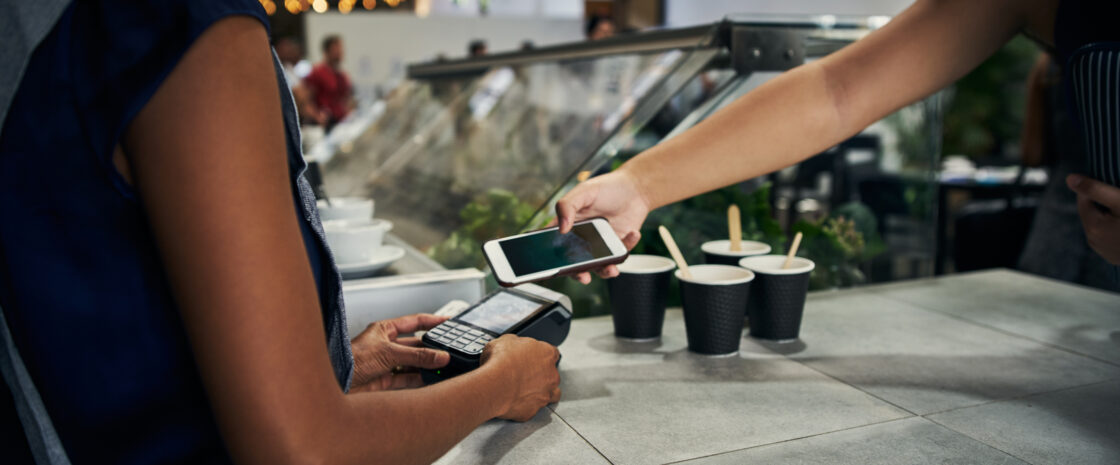A digital wallet is an app that stores cards, loyalty program details and more on your phone for convenient contactless payments and online purchases. Over half of Australians ages 18 through 29 make at least one payment using a mobile device each week.
What is a digital wallet?
A digital wallet is typically linked to your bank and stores your chosen credit card or debit card details. It allows you to tap and pay at a contactless reader with your mobile phone, smartwatch, or wearable fitness device without carrying a physical card.
Think of your digital wallet in the same way as your physical wallet, not just as a single credit card. You also can store your driver’s licence, healthcare cards, loyalty program information, and upcoming travel and event tickets there.
Digital wallets are also called mobile wallets, virtual wallets, e-wallets, and wallet apps. Popular examples in Australia include the Apple Wallet, Google Wallet and Samsung Wallet.
The Australian Government is set to introduce regulations for digital wallet providers that will treat them like electronic funds transfer at point of sale (EFTPOS) and credit card companies.
How do digital wallets work?
Digital wallets operate slightly differently and process payments using various technologies.
- Near-Field Communication (NFC): This enables communication between two devices placed close to each other. The merchant must have a compatible card reader to process your payment. Apple Pay and Google Pay use NFC technology.
- Magnetic Secure Transmission (MST): This creates a magnetic signal, similar to a physical credit card stripe. The signal is transmitted to the payment terminal. Samsung Pay uses both MST and NFC technology.
- QR codes: These are barcodes you scan with your smartphone’s camera. You’ll scan a QR code at the register when using PayPal or the EFTPOS-backed digital wallet, Beem It.
Other differences
There are also other distinctions to keep in mind. For example, where you can use the wallet depends on whether it is open or closed.
- An ‘open’ wallet facilitates transactions between any customer and merchant as long as the required technology is available — for example, Apple Pay.
- A ‘closed’ wallet enables transactions for a specific merchant or group of merchants — for example, Amazon Pay.
Also, how a digital wallet stores money will depend on whether it’s a passthrough wallet or a cash storage facility.
- Passthrough wallets do not store any money directly. Instead, they store payment cards issued by a bank — for example, Google Pay.
- Cash storage facilities are digital wallets that require the user to load it with the currency they’ll spend— for example, the wallet in the PayPay app.
Digital wallets in Australia
The major digital wallets in Australia are Apple Pay, Google Pay and Samsung Pay. Apple Pay is the most popular, accounting for over half of all mobile payments. Others include:
- Afterpay
- AliPay
- Amazon Pay
- Beem It
- PayPal app
- WeChat Pay
- ZipPay.
Digital wallet payments are most commonly used with smaller transactions because anything under $100 doesn’t require you to enter your PIN, so you can simply tap your phone. Tap-and-go payments are available anywhere you see the contactless payment symbol (the four curved lines that look similar to a WiFi icon) and usually on the top of the EFTPOS machine.
However, it’s important to distinguish digital wallets from a bank’s contactless card payment method. For example, tapping an ANZ credit card differs from tapping an iPhone with Apple Pay.
» MORE: What is a virtual credit card?
How to choose a digital wallet
The digital wallet you select will depend on the phone you carry. If it’s an iPhone (or you wear an Apple Watch), you’ll use Apple Pay. Whereas if you have an Android device, you’ll use Google Pay. Or, if you have a Samsung device, you’ll use Samsung Pay. Think about the devices you use and who you bank with. Device compatibility is the primary consideration when choosing a digital wallet.
Check with your bank for any specific limitations. For example, CommBank Tap & Pay is only available on Android phones. If you have an iPhone and are a CommBank customer, you’ll have to use Apple Pay.
Not all merchants accept all digital wallets. Take the time to notice the specific payment options at the places you frequent. Look for the contactless symbol and the Apple Pay, Google Pay and Samsung Pay icons.
» MORE: Can you tap on with a credit card on a train?
Are digital wallets safe?
The most common question regarding digital wallets is: “Are they safe?” There are two main safety concerns: preventing someone from using it and protecting your financial data.
FaceID, Touch ID or your passcode is required to authenticate the transaction on your iPhone or Apple Watch, so there are security mechanisms in case your phone is lost or stolen. For transactions over $100, you need a PIN.
Regarding data protection, digital wallets have a built-in security feature that conceals card details, like your card number, when you make a digital purchase. Instead of sending card details to the merchant, the digital wallet passes a unique code to process the transaction. Apple Pay, for example, uses a device-specific number and unique transaction code. Card details and transaction information aren’t stored on your device or Apple servers.
» MORE: How to spot and avoid credit card scams
The pros and cons of using a digital wallet
There are no fees for consumers to use Apple Pay, Google Pay or Samsung Pay. Digital wallet transactions vs. physical card transactions show up the same on your statement. There’s also no distinction between digital wallet, contactless card, or chip and PIN payments on your monthly statement.
While there are no transaction limits for digital wallet payments, you’ll be asked to enter your PIN if the total exceeds $100.
Pros
- Faster, more convenient shopping
- Comprehensive built-in security features — card details aren’t stored or shared
- Digital wallets are already built into smartphone devices, e.g., Apple Wallet
- No fees or limitations, besides entering your PIN if the total is $100+
- Lowers risk of losing physical cards.
Cons
- Not all places accept mobile payments or every type of digital wallet
- You need to have a smartphone
- Requires an understanding of technology
- The risk of overspending because transactions are even more convenient.
Alternatives
Digital wallets are another payment option; they are not a necessity. Paying for items using your smartphone, smartwatch, or wearable fitness device is easy and convenient. Still, you can continue swiping/inserting your card and entering your PIN, use your card to tap-and-go or pay in cash if you prefer.
Try different options and find what works for you. Maybe you use mobile payments for small purchases and quick errands but would rather bring your wallet with you on bigger shopping trips to have your choice of cards and payment methods.
Frequently asked questions about digital wallets
In addition to your credit and debit cards, you can store items such as your driver’s licence, healthcare cards, loyalty cards, and upcoming travel and event tickets.
DIVE EVEN DEEPER

Can You Set Up Automatic Credit Card Payments?
Take away the stress of remembering credit card due dates: Set up a monthly automatic payment.

Can I Use A Credit Card Instead of Myki on Melbourne Public Transport?
You can’t use a credit card instead of Myki yet, but you’ll eventually be able to use your credit card on Melbourne public transport.

Opal Card Vs. Credit Card
What’s the more convenient and cost-effective way to navigate Sydney and its surrounds — Opal or credit card?

8 Tips For Using A Credit Card Overseas
Follow best practices when using a credit card overseas, like using a travel money card, carrying cash and leveraging frequent flyer points.

